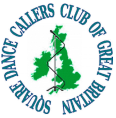On Gender Free Dancing
I’ve just returned from a tour of
the US where I have been both calling and dancing.
One of the things that struck me during my time there are
the differences between their approach and ours: Dances
run longer (14-18 times through), are generally simpler, almost always have
partner swings, and the caller is expected to shut up after a few
times through so the dancers can enjoy the band.
More striking, and the focus of my column this issue, is their
approach to gender neutrality.
Traditionally many forms of folk dancing
(Squares, Contra, Ceilidh, Playford) have defined roles that are
referred to as Gents and Ladies, which were danced by men and women
respectively. As social and demographic changes
meant more women danced than men, it became acceptable for women to
dance the Gent’s role, but not vice-versa. With the
onset of gender equality in society as a whole you now find men
dancing as Ladies, but only occasionally and usually by younger
members of the dance community. With the modern
social trend of movement away from binary gender identification and
towards a more fluid approach it is perhaps time we at least caught up
with “dance whichever role you want”.
There has been much correspondence on
SharedWeight (a callers’ discussion group) about how to move away from
the traditional, gender focussed names we assign to roles.
Popular suggestions include Jets & Rubies and Leaders &
Followers. All have pros and cons, and so far there
are no generally accepted new terms. Many suffer
from still having Male and Female overtones (which of Jets and Rubies
would you say was “Male”?) as well as similarity to other terms that a
caller might use (lead and follow, for example).
One of the difficulties of making the switch is
that dancers need to know what role they’re dancing.
Even if you replace “Ladies Chain” with “Chain”, the dancers
need to know which of them is expected to initiate the move.
If dancers are going to swap roles during an evening, which
must surely be the goal of true role independence, they need to be
comfortable with dancing both roles, and always aware of which role
they’re currently in.
In the US the approach to this takes many forms.
At an advanced contra session at the wonderful Glen Echo, my
first two dances were with men, both of whom asked me to dance.
The dancers have a wonderful phrase “Dance with whoever’s
coming at ya” - in other words trust the people you’re dancing with to
get it right, so don’t flinch if a man comes towards you in a chain.
This has led to a practice of “switching”, where a couple will
change roles at different points during the dance, often after a
swing. This is quite fun to do, and I had one
memorable dance where neither of us knew which role we would be
dancing for the next time through until the very end of the swing.
This proved confusing to our shadows as they weren’t always
going to meet the same people (as a matter of courtesy if you’re going
to switch in a dance which has a shadow interaction you let them know
beforehand). Interestingly, this dance was still
called using “Ladies” and “Gents” as role descriptors.
One thing at a time…
My next encounter was at a birthday party where
both the celebrants were leading members of the Lavender Country and
Folk Dancers (lcfd.org), an organisation of gender free dance clubs.
Originally created to provide gay dancers with a safe place to
dance, it now provides gender free dancing for all.
Whilst many of the guests at the party were seasoned gender free
dancers, not all were, and a significant number of people were
non-dancers – at least at the start!
The approach the party organisers took was to
provide lanyards for people to wear. They were made
from playing cards, with a blue and a red side, on which was attached
a Heart (red) or Diamond (blue) shape – Hearts and Diamonds being
their designated role specifier. The idea was that
you chose a role to dance, often in agreement with you partner, and
set your lanyard accordingly. This served as an
indicator to other dancers and reminder to you – and if you changed
roles mid dance you merely flipped your lanyard. It
worked very, very well, with both dancers and non-dancers taking it
effortlessly on board.
So that’s the US – what about the UK?
Well, what do you think? What does your club
do? Does it have an agreed approach to “dance any
role you like”? Has it even considered it?
Do let me know… dance@devonfolk.org.uk
